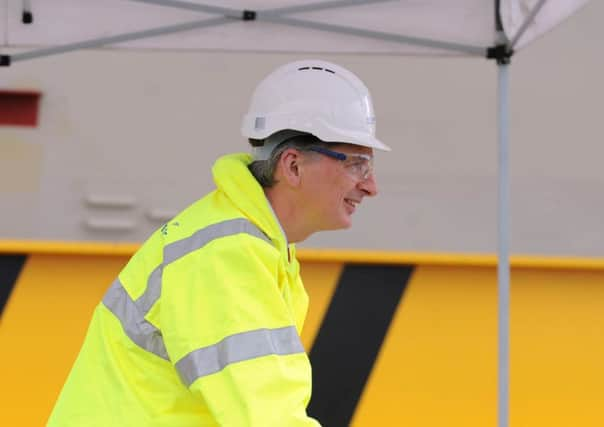Bill Jamieson: Riding the electrifying infrastructure tiger
This article contains affiliate links. We may earn a small commission on items purchased through this article, but that does not affect our editorial judgement.


It has propelled governments into audacious spending and borrowing – and fund managers into a frantic spasm of “sector rotation”. Out go bonds, government stocks and those boring unfashionable defensive income funds into – well, infrastructure.
But there are problems here for investors seeking to catch the tide. Any mutual fund or investment trust with the word “infrastructure” in it has already soared skywards, exposing them to that timeless stock market peril: piling in at the top.
Advertisement
Hide AdAdvertisement
Hide AdRetail access to the sector is also limited: it is dominated by private equity players and the retail funds they offer can be opaque. Timescales are also long: it may be ten or more years before an infrastructure project comes to fruition and offers a return. And because a sector has become all the rage does not mean that every fund or trust specialising in it is a sure-fire winner, or that the projects and companies backed are universally successful.
But for the moment, it is hard not be swept up in the infectious euphoria. In the Autumn Statement last week, UK Chancellor Philip Hammond announced a £23 billion infrastructure spending spree over five years. And across the Atlantic, president-elect Donald Trump has signalled $1 trillion of infrastructure spending.
It’s an asset category where closed-end investment trusts have a pronounced edge. The Association of Investment Companies (AIC) points out that they can provide investors with the purest way of accessing infrastructure projects, by investing in contracts to develop and run long-term capital expenditure projects in public sectors such as transport, healthcare and schools.
And this sector has stormed ahead in recent years. HICL Infrastructure and International Public Partnerships were trailblazers when they launched in 2006. Assets back then totalled £550 million. Today that has ballooned to £11bn, making the sector the fourth-largest investment company sector with a dozen specialist trusts. The ranks have been boosted by the emergence of the Renewable Energy Infrastructure sector after a spate of launches in 2013 and 2014.
Annabel Brodie-Smith of the AIC said: “Infrastructure has been the fastest-growing investment company sector of the last decade, with the closed-ended structure the ideal home for investing in long-term infrastructure projects. This is because managers have a stable pot of money and are crucially not affected by investor inflows and outflows.” That surge in investor interest and demand is reflected in the pronounced premium at which shares in these trusts stand to the value of their underlying assets. Currently the average discount is around 8 per cent. But trusts in the infrastructure sector are standing at an average premium of 14 per cent.
You have to be very brave – or have a very long time horizon indeed – to buy shares in an investment trust standing so conspicuously above their underlying value.
That said, the £2.9bn HICL Infrastructure Trust has performed solidly – up by more than 70 per cent over five years. The shares at 162.6p stand at a premium of 11.6 per cent to net assets and yield an attractive 4.6 per cent.
Tony Roper, director of InfraRed Capital Partners, which acts as investment adviser to HICL Infrastructure, said: “Investors are attracted by the segment’s stable and differentiated performance with low volatility and strong income generation plus inflation linkage, evidenced historically over ten years.”
Advertisement
Hide AdAdvertisement
Hide AdBut what other trusts might benefit from the infrastructure spending boom - and where the premium to net assets can be avoided? One beneficiary of the greater government attention to public investment and environmental spending is a long-time favourite of this column – Impax Environmental Markets. This £433m trust focuses on markets for cleaner or more efficient delivery of basic services of energy, water and waste. The yield is minimal – 0.7 per cent – but over one year the shares have risen by 36.1 per cent and over five years by 135 per cent.
Many commodity and natural resource trusts have bounced up sharply from recent multi-year lows. BlackRock World Mining has pulled up from a miserable performance to gain 79 per cent this year, though it is still standing at a 12 per cent discount to net assets and yield 5.3 per cent.
Less volatile, nearer home, and with a more diffuse spread of UK shares is Fidelity Special Values. The shares at 210.75p stand on a discount of 5.6 per cent and yield 1.76 per cent. The gain so far this year is 8.4 per cent, with a five-year gain of 158 per cent.
